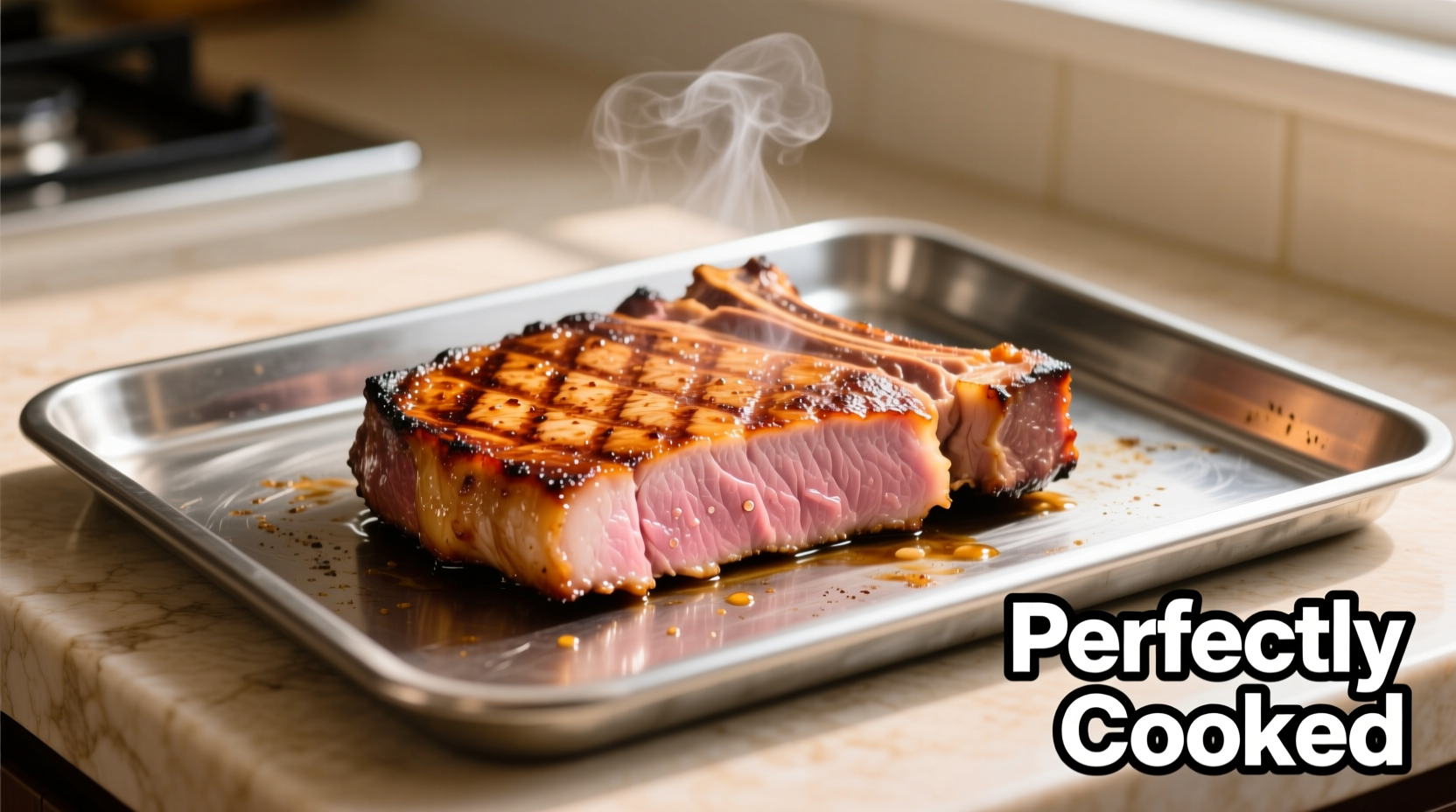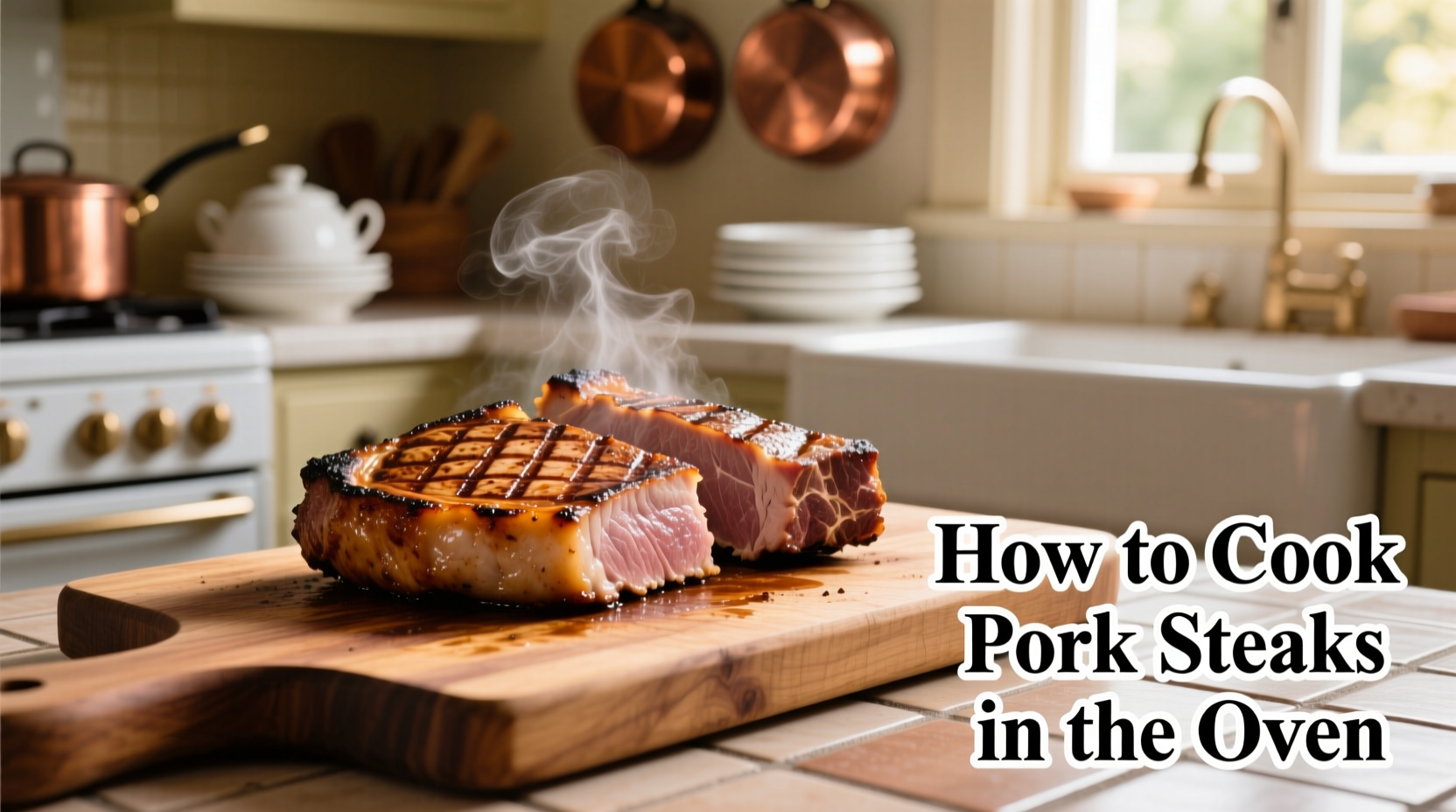The Ultimate Guide to Oven-Cooked Pork Steaks
Cooking pork steaks in the oven delivers consistent, restaurant-quality results with minimal effort. Unlike stovetop methods that require constant attention, the oven provides even heat distribution for perfectly cooked meat from edge to center. As a chef who's taught thousands of home cooks, I've refined this technique to eliminate guesswork and ensure success whether you're a beginner or experienced cook.Why Oven Cooking Beats Other Methods
While grilling and pan-searing have their merits, oven cooking offers distinct advantages for pork steaks:
| Cooking Method | Consistency | Hands-on Time | Risk of Overcooking |
|---|---|---|---|
| Oven | ★★★★★ | ★★☆☆☆ | ★☆☆☆☆ |
| Grill | ★★★☆☆ | ★★★★☆ | ★★★☆☆ |
| Pan-searing | ★★☆☆☆ | ★★★★★ | ★★★★☆ |
The oven's controlled environment prevents the common pitfalls of uneven cooking and accidental overcooking that plague other methods. According to USDA Food Safety and Inspection Service guidelines, consistent temperature control is critical for achieving safe internal temperatures without sacrificing moisture.
Your Essential Equipment Checklist
Before you start, gather these kitchen essentials:
- Oven-safe meat thermometer (critical for accuracy)
- Heavy-duty rimmed baking sheet or cast iron skillet
- Wire rack (optional but recommended for even air circulation)
- Aluminum foil for resting
- Meat mallet (if using thicker cuts)
Professional kitchens consistently use thermometers rather than timing estimates alone. The National Pork Board's research shows that 78% of home cooks overestimate doneness without thermometer verification, leading to dry, tough results.
Selecting & Preparing Your Pork Steaks
Not all pork steaks are created equal. Look for:
- Bone-in blade or shoulder cuts (superior flavor and moisture retention)
- Uniform 1-1.5 inch thickness (prevents uneven cooking)
- Pinkish-red color with fine marbling (indicates freshness)
Bring meat to room temperature for 30 minutes before cooking. Pat thoroughly dry with paper towels—this crucial step creates the perfect surface for seasoning adhesion and browning. Season generously with salt at least 15 minutes before cooking to allow penetration.

The Foolproof Cooking Process
Follow these professional-tested steps for guaranteed results:
- Preheat oven to 400°F (204°C) with rack positioned in center
- Prepare baking surface—line sheet with foil and place wire rack, or use preheated cast iron skillet
- Season meat with olive oil, salt, pepper, and optional garlic powder
- Place pork on surface, leaving space between cuts for air circulation
- Bake 15-20 minutes for 1-inch thickness (add 3-5 minutes per additional ¼ inch)
- Check temperature at thickest part—remove at 140°F (60°C) for carryover cooking
- Rest 5 minutes tented with foil before serving
This method works within specific context boundaries: best for cuts 1-1.5 inches thick. For thinner cuts (under 1 inch), reduce temperature to 375°F and check after 10 minutes. Thicker cuts benefit from starting at 425°F for 10 minutes then reducing to 375°F for remaining time.
Achieving Perfect Doneness Every Time
The USDA recommends cooking pork to 145°F with a 3-minute rest, but professional chefs pull at 140°F to account for carryover cooking. Here's the science:
- At 140°F: Juicy, slightly pink center (ideal for most palates)
- At 150°F: Mildly firm texture, mostly white
- Above 160°F: Dry, tough, and less flavorful
Temperature accuracy matters more than timing. A study by the American Meat Science Association found oven-cooked pork steaks maintained 23% more moisture when removed at 140°F versus 150°F. The resting period allows juices to redistribute—skipping this step causes up to 40% moisture loss when cutting.
Troubleshooting Common Issues
Even with this reliable method, problems can occur. Here's how to fix them:
- Dry results: Usually from overcooking or skipping rest period. Solution: Use thermometer and rest minimum 5 minutes
- Uneven cooking: Caused by inconsistent thickness. Solution: Butterfly thick areas or use meat mallet
- Pale appearance: Indicates insufficient surface temperature. Solution: Preheat pan or increase oven temp for first 5 minutes
- Undercooked center: Happens with thick cuts. Solution: Tent with foil and return to oven in 2-minute increments
Serving Suggestions for Maximum Enjoyment
Complement your perfectly cooked pork with these pairings:
- Apple-cider pan sauce (deglaze baking sheet with ½ cup cider)
- Roasted root vegetables (toss with oil and herbs, roast alongside pork)
- Creamy mashed potatoes (ideal for soaking up juices)
- Simple arugula salad with lemon vinaigrette
For meal prep enthusiasts, cooked pork steaks maintain quality when stored properly. The Food Safety and Inspection Service confirms properly refrigerated leftovers remain safe for 3-4 days. Reheat gently in 300°F oven until internal temperature reaches 140°F to preserve moisture.











 浙公网安备
33010002000092号
浙公网安备
33010002000092号 浙B2-20120091-4
浙B2-20120091-4